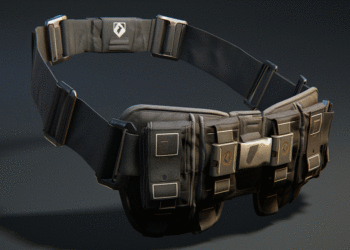Many factors can affect the quality of mobile communication inside a building, which is why many mobile in-building coverage solutions are used.
In this article, we will explain how to boost the mobile phone signal in a building. Read on, and you will discover the easiest ways to check the quality of your connection, as well as approaches.
Indoor mobile coverage, what is it?
Indoor coverage brings a mobile network inside a building. The quality of this coverage does not only depend on the external network.
The problems of indoor network coverage have increased over the past ten years with the construction of buildings to new environmental standards, whose concrete or metal structures, or so-called “athermal” windows, obstruct the passage of waves.
For example, metal and concrete are materials widely used in construction. They have many advantages that explain their popularity. But, despite their strengths, there is a huge disadvantage. Metal and concrete greatly affect mobile signal transmission. Quite often, the signal outside can be stable and strong enough, but inside, the situation is much worse.
These are generally HQE (High Environmental Quality) buildings. Additionally, some basement rooms, or parking lots, for example, may also not be covered properly by your carrier’s network. That is why many businesses are regularly looking for mobile in-building coverage solutions to boost the mobile signal in the building.
Obviously, if the building is located in a white zone, that is to say not covered by the mobile network, its indoor mobile coverage will also be faulty. So, one of the most common reasons for signal degradation is the distance between your location and the nearest carrier’s cell tower.
Insufficient mobile coverage
A bad signal inside a building can therefore depend on several things:
- the distance between the outdoor antenna and the building;
- the topography of the place;
- the saturation of the network in dense areas or the nature of the building and the materials of its construction.
However, poor coverage significantly penalises the operation of a company. Fixed telephony uses tend to decrease in favour of mobile communications. And the challenge of the quality of the call is major, in a voice as in data, as it contributes to the efficiency of the teams, but also to the image of the company, whose customers expect flawless connectivity.
Try to reduce the influence of other electronic devices on your telephone connection
If you notice that your mobile coverage is worse in some indoor areas than others, you can try to minimise potential electromagnetic interference. This can help boost cell phone signals inside a building. What exactly can you do in this case? You should keep wireless electronic devices, including your Wi-Fi router, away from places where you prefer to use your mobile phone. This method would be useful if the existing electromagnetic interference was the only harmful factor.
Check the mobile signal in your area
The problem is that we often panic too early. For example, if your carrier is doing technical work in your area, some services may not be available, and the connection may be unstable.
However, at the same time, it happens that the area in which you live or work is poorly covered by your operator. Today, many websites and applications can help you check the signal quality at home:
- On CellMapper, you can find real-time data to see where the nearest cell towers are that transmit 4G signals.
- CellReception relies on Google Maps and also displays cell towers in your area.
- OpenSignal does not provide maps showing where cell towers are located, but you can see the signal strength of various networks in your area.
If using these tools, you find that the quality of the connection in the neighbourhood is satisfactory, the building materials of your home are the most likely cause of communication interference. And to improve communication, you can use the solutions offered by the UCtel company.
Install a UCtel signal booster for your building
This solution may seem too simple. But it’s really effective. Such a repeater will pick up the signal transmitted by your carrier and make it stronger so that your mobile phone can connect. Even in a metal building, the amplification system will work perfectly.
How does it work?
Such a mobile signal amplifier has very sensitive antennas. One of them can find a signal too weak that your smartphone cannot pick up. And the other is to transmit the already amplified signal to your devices.
The amplifier can be installed indoors, and there are no special installation requirements. And as you must have understood by now, all smartphones and tablets can use a stabilised signal. This means that with support for multiple connections, it will be enough to install one device for your family or office.
For what purposes can such amplifiers be used?
With these amplifiers, you can improve the quality of any signal sent by your operator. UCtel provides a wide range of solutions for its customers. Among the proposals, you can find solutions for amplifying gsm, 3G, 4G, and even 5G signals, as well as dual and tri-band devices. Such a repeater is ideal when you need to improve several types of signals at the same time.
Each of these amplifiers copes with work in various conditions, whether it be concrete or metal buildings of different sizes. UCtel customers can use solutions anywhere from small houses to huge office buildings. But be very careful when choosing to get exactly the device that will have enough coverage to effectively stabilise your connection throughout the entire internal area.
Do amplifiers affect health?
And besides, UCtel’s solutions are completely safe, and you can put aside all your concerns about any potential harm from using them. Although some people think that signal booster has too high emissions, this is not the case. With a signal booster, you can even reduce the radiation emitted by your mobile devices. This means the amplifiers can be installed anywhere in your home or office.
David Prior
David Prior is the editor of Today News, responsible for the overall editorial strategy. He is an NCTJ-qualified journalist with over 20 years’ experience, and is also editor of the award-winning hyperlocal news title Altrincham Today. His LinkedIn profile is here.











































































